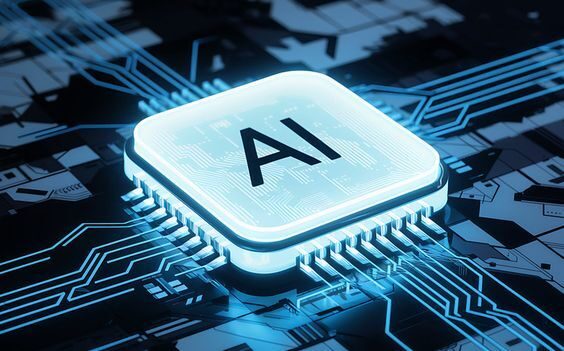In today’s digital landscape, personalization has evolved from a nice-to-have to a must-have feature. By 2025, AI-powered personalization is no longer just a marketing buzzword—it’s the foundation of modern web design. Smart websites now adapt dynamically to user preferences, behaviors, and context, delivering truly tailored experiences that stand out in competitive markets.
As a leading digital agency, UDM Creative is at the forefront of this revolution, crafting bespoke, AI-powered websites that feel like they were built just for each visitor. In this article, we’ll explore why AI-powered personalization matters, how it shapes user experience (UX), and actionable insights for businesses aiming to future-proof their online presence.
This shift toward hyper-personalized digital experiences is not merely about convenience—it directly impacts engagement, loyalty, and conversion rates. Visitors are no longer satisfied with static, one-size-fits-all websites. They expect web experiences that are responsive, intelligent, and tailored—experiences that feel almost human. And this is where the true power of AI shines.

AI-Powered Personalization Making Every Website Unique in 2025
1. What Exactly Is AI-Powered Personalization?
AI-powered personalization uses artificial intelligence and machine learning to customize website content, layout, and functionality in real-time. By analyzing user data—such as browsing history, location, device type, and demographics—AI dynamically adjusts site elements to fit individual preferences.
Personalization can include:
AI-driven product recommendations
Tailored content modules
Smart CTAs
Adaptive layouts
This approach contrasts sharply with static websites that serve the same experience to every visitor. AI aligns user experience with expectations—and in 2025, that difference is essential.
2. Why AI-Powered Personalization Is the 2025 Game-Changer
Skyrocketing ROI and Customer Loyalty
Recent data shows:
90% of marketers report improved ROI with personalization
76% of consumers are frustrated without personalized experiences
Personalized CTAs convert 42% more visitors into leads
When brands offer relevant, timely content, they see higher engagement and stronger customer retention.
A Global Standard—Not a Luxury
70%–80% of consumers prefer personalization and are even willing to share personal data for it. By 2025, personalized experiences will be expected—especially for brands that want to compete internationally.
Enhanced User Experience = Higher Conversion
E‑retailers saw up to 320% increase in conversions with personalized product recommendations . Even outside e-commerce, tailored homepages or content feeds lead to longer sessions and deeper engagement.
3. Key Components of Effective AI-Powered Personalization
Data Collection & Real-Time Analytics
AI systems draw upon behavioral data—page views, clicks, time spent—to detect patterns, predict intent, and segment audiences. Advanced cases use location, weather, and time-of-day information.
Machine Learning & Recommendation Engines
Using algorithms like collaborative filtering, AI delivers smart recommendations—for example, “You might also like…” sections tailored to users’ past behavior.
Dynamic Layouts & Content Modules
Imagine a news site rearranging featured articles based on reading history. Or a store adjusting its banner to highlight deals in the user’s region—these are powered by AI personalization.
Omnichannel Consistency
AI-driven personalization spans across touchpoints—mobile, desktop, email, chat—creating seamless and consistent brand experiences.

4. Examples & Success Stories
Netflix & Streaming Services
Netflix’s recommendation engine—built on AI personalization—drives a large portion of its viewing time. Users get custom thumbnails, personalized thumbnails, and video suggestions that feel handpicked.
E-commerce Giants
Retail leaders like Victoria’s Secret, Swarovski, Saks, and Caleres see measurable results:
10% of revenue from AI-powered recommendations (Swarovski)
23% boost in conversions at Caleres due to AI-enhanced search
These brands integrate AI from search to service—demonstrating what’s possible with robust personalization.
5. Implementing AI-Powered Personalization on Your Website
1. Define Your Goals
Are you aiming to increase conversions, reduce bounce rates, or improve customer satisfaction? Clarifying objectives ensures targeted implementation.
2. Prioritize Your Personalization Model
Product Recommendations – Ideal for e-commerce
Content Suggestions – Useful for blogs and media sites
Layout Customization – Helps apps and SaaS platforms
Chatbots/Assistants – Great for immediate engagement
3. Choose the Right Tools
Leading platforms include:
Adobe Experience Platform for content and orchestration
Specialist tools like Segment, Twilio, or IBM for behavior-driven workflows
UDM Creative matches tools to your business needs.
4. Gather Quality Data
Collect first-party data—user actions, purchase history—while ensuring compliance with privacy regulations like GDPR and CCPA.
5. Monitor and Optimize with A/B Testing
AI models must be continually evaluated—use A/B tests to refine recommendations and layouts.

6. Challenges and Solutions
Privacy & Data Ethics
Collect user data transparently. Implement strong security protocols, anonymization, and clear opt-in processes.
Technical Complexity
AI integration can be complex; it requires technical talent. UDM Creative handles this end-to-end—design, development, deployment, and maintenance—for a seamless experience.
Avoiding Over-Personalization
Too much personalization can feel “creepy.” UDM Creative strikes the right balance—keeping personalization helpful without overstepping.
7. Why Work with UDM Creative for AI-Powered Personalization
At UDM Creative, we understand technology—and people. Here’s why businesses trust us:
Custom AI strategies: We don’t do one-size-fits-all. We research and tailor AI models to your audience.
Integration across systems: We build seamless experiences across your CMS, CRM, and e-commerce platforms.
Data-first mindset: We ensure your AI models are driven by quality, compliant data—captured and used ethically.
Continuous optimization: We monitor AI performance and fine-tune through ongoing A/B testing.
Global experience: We design for multilingual, multicultural audiences—ensuring every user feels seen.
Check out our portfolio and services at UDMCREATIVE.COM—we’ve delivered measurable business results with AI-powered websites.
8. The Future: Agentic Web & Autonomous Experiences
We’re entering the era of the agentic web—where autonomous software agents make decisions on behalf of users. These agents act like intelligent front-end staff, curating content, booking services, even handling transactions
In 2025, AI-powered personalization will be real-time, predictive, and increasingly autonomous—creating web experiences that feel alive, intuitive, and uniquely tailored to each user.

9. Step-by-Step Guide to Get Started
Audit Current Experience – Identify where personalization is needed.
Select Use Cases – E.g., “related products”, “welcome back” banners.
Choose Tools – Off-the-shelf platforms or bespoke APIs.
Implement Iteratively – Start small (homepage, product pages), then expand.
Test & Measure Results – User engagement, CTR, revenue per visit.
Scale & Automate – Add bots and dynamic UI components for a full AI experience.
UDM Creative offers end-to-end support—from planning to execution.
Frequently Asked Questions
1. How does AI-powered personalization differ from traditional personalization techniques?
Traditional personalization typically relies on static rules—like showing a user products based on past purchases or using their first name in an email. In contrast, AI-powered personalization uses machine learning, real-time behavioral data, and predictive analytics to dynamically adapt content, layout, and functionality for each user. It continuously learns and evolves, offering hyper-personalized experiences that feel intuitive and timely.
2. What types of data are used to fuel AI personalization in 2025?
AI systems in 2025 draw from a wide array of data sources, including:
- Behavioral data: Clickstreams, scroll depth, time on page
- Transactional data: Purchase history, cart abandonment
- Contextual data: Device type, location, time of day, weather
- Psychographic data: Interests, values, lifestyle indicators
- Biometric and voice data (where permitted): Used in sectors like healthcare and smart devices
This data is processed in real time to create a living, breathing user profile that adapts with every interaction.
3. What is hyper-personalization, and how is it implemented on websites?
Hyper-personalization is the next evolution of personalization. It combines AI, real-time data, and predictive modeling to deliver experiences that are not just relevant—but uniquely tailored to the individual. For example:
- A fashion site might adjust its homepage layout based on a user’s browsing style and color preferences.
- A news platform could reorder articles based on reading speed and sentiment analysis of past reads.
Implementation involves integrating AI engines with CMS platforms, using APIs to pull in real-time data, and deploying A/B/n testing frameworks to optimize outcomes.
4. How do businesses ensure ethical use of AI personalization, especially regarding privacy?
Ethical AI personalization in 2025 hinges on:
- Transparency: Clearly informing users what data is collected and how it’s used
- Consent: Offering opt-in/opt-out mechanisms for personalization features
- Bias mitigation: Regular audits to ensure algorithms don’t reinforce stereotypes or exclude certain groups
- Data minimization: Collecting only what’s necessary and anonymizing sensitive information
Many companies now employ AI ethics officers or partner with third-party auditors to maintain compliance and trust.
5. What are the biggest challenges businesses face when adopting AI personalization?
Some of the top hurdles include:
- Data silos: Fragmented data across departments can hinder unified personalization
- Integration complexity: Merging AI tools with legacy systems requires technical expertise
- Scalability: Real-time personalization at scale demands robust infrastructure
- User fatigue: Over-personalization can feel invasive if not handled delicately
To overcome these, businesses often start with pilot programs and gradually scale, using feedback loops to refine their approach.

10. Conclusion
AI-powered personalization isn’t just a 2025 trend—it’s a transformative web design paradigm. Personalized websites drive deeper engagement, stronger brand loyalty, and higher revenues. As businesses globally prepare for the future, those who harness AI-first personalization will stand out—and win.
Let Urban Dive Marketing help you put the right pieces in place. Visit UDM Creative today and take the first step toward real digital growth.
If you want expert guidance, strategy, and execution that delivers real results—reach out to the professionals at Urban Dive Marketing (UDM) and you can also contact us on whatsapp or call us directly 03475159209
We hope you got a good amount of information by reading this article do not forget to give us feedback.



